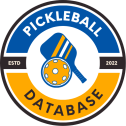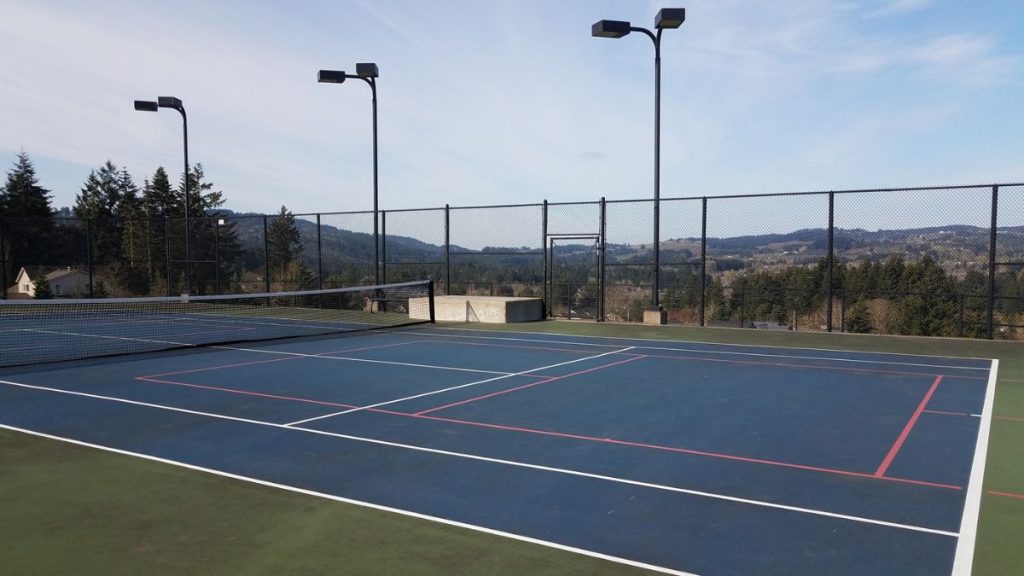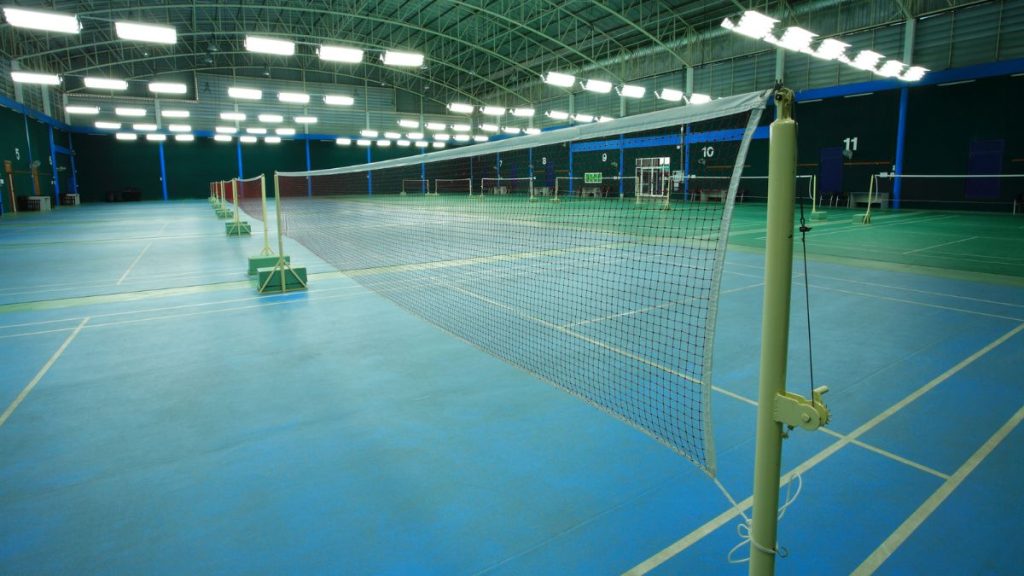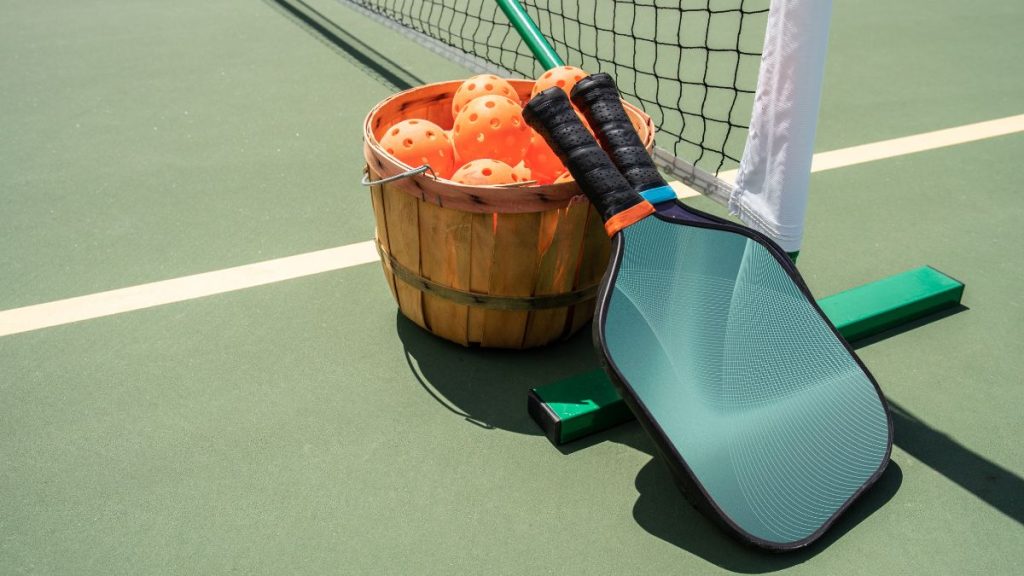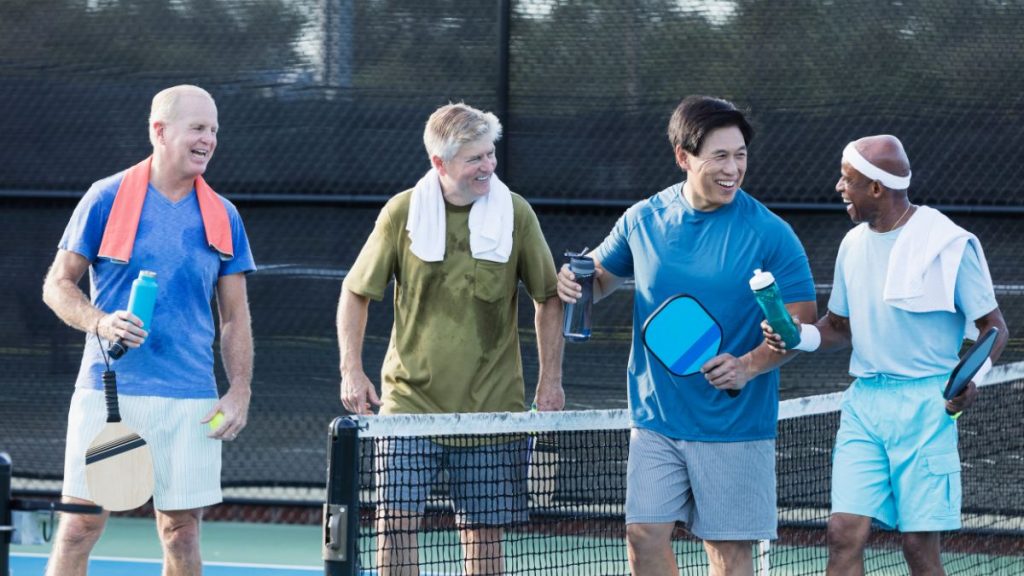The growing popularity of pickleball demands more pickleball courts across the country. Since you can’t have an instant standard pickleball court around your area, people are getting more creative in finding ways to play.
Most of the time, your best alternative is to mark an existing court. In warmer places, people are utilizing basketball and tennis courts. In colder places, they also maximize volleyball, tennis, and basketball courts.
This article will provide a detailed step-by-step guide on the best way to mark a pickleball court and answer the most frequently asked questions regarding lining the court.
Let’s get started!
What Do You Need For Temporary Markings?
If you don’t want to permanently turn a court into a pickleball court, you can do temporary markings instead. Here are the materials you will need to do such:
- A friend that you can ask for help. Although, temporary marking of the court can be done by yourself.
- For temporary lines, you will need 200 feet of green tape.
- To measure the court’s dimensions, you will need two tape measures. One should be a 25-foot tape, and one should be a 50-foot tape.
- Lastly, you need some chalk or marker.
What Do You Need For Permanent Markings?
Permanently marking a court into a pickleball court will require more materials and days to finish. Paint and paint materials will also be essential. Here are the following materials that you will need to permanently mark a court:
- You will need sunshine to dry the paint. In general, one to two days of direct sunlight will already do. Check the weather before marking, especially if any roof does not cover the surface.
- You can have a friend with you, but permanently marking the court can also be done by yourself.
- You will need 400 feet of green tape.
- For lines, you will need paint.
- Prepare some paint materials, such as paintbrushes, drop cloth, etc.
- To measure the court’s dimensions, you will need two tape measures. One should be a 25-foot tape, and one should be a 50-foot tape.
- Lastly, you need some chalk or marker.
What Type Of Tape Should I Use?
In temporarily and permanently marking the surface, you want more adhesive tape. The best-recommended tape to be used is green Frog tape. Using green Frog tape also ensures that no residue will be left when you remove them.
Overall, you will need 198 feet of tape in both temporary and permanent line markings. The green color of the tape would best suit a tennis court since it can almost make the white lines invisible to the players’ vision.
Avoid using duct tape, as it is expensive and can ruin the surface when you remove them.
What Are The Pickleball Court Dimensions?
Before you start marking the court, it is important that you first know the required court dimensions and line measurements.
The overall court dimension should be 44 inches x 22 inches. The net posts should be 12 inches outside the sideline. The net’s height should be 34 inches in the center and 36 inches on the sidelines.
Finally, the width of the lines is ideally 2 inches.
A Step-by-Step Guide On How To Mark A Pickleball Court
Now that you’ve learned all the materials and the required court dimensions let’s proceed with how you can best mark a pickleball court. An image is presented below as your guide in following each step.
- From points A to B, create a straight line measuring 44 feet. Put tape inside the line.
- Using the 25-foot measuring tape, measure a 20 feet line from point A to point C. Also, using the 50-foot measuring tape, measure 48.33 feet from point B to point C. The intersection of the two measuring tapes will be point C; apply tape on it. Don’t mark the line that connects point B to C.
- From point C to point D, mark a 44 feet straight line. Meanwhile, using the other tape measure, mark a 20 feet line from point B to point D. Put a tape on the intersection of both measuring tapes (point D).
- To create the inner lines, mark 15 feet, 22 feet, and 29 feet lines from A to B and C to D. The 22-feet line will serve as the line for the net. Put tape connecting the two 15 feet and 29 feet lines from both sides to create the line for your kitchen area.
- To create the centerline, measure the AC line and BD line and mark the 10 feet point. Measure the kitchen lines as well and mark the 10 feet point as well. Connect the 10 feet point from the AC and BD lines to the 10 feet point from the kitchen lines.
Frequently Asked Questions
At this point, let us answer some of the most frequently asked questions about marking the pickleball court. After answering these questions, you are now ready to mark a court and enjoy the pickleball game.
What Color Are Pickleball Lines?
The USAPA does not recommend any color for pickleball courts as long as there is a contrast with the existing lines in the court. A tennis court is normally lined with white paint, so any bright color that can create a contrast with its lines would be the most recommended.
In painting, the USAPA moreover recommends 100% acrylic paint. For places that have hotter weather, a lighter color is more used. You also want to paint your court with a color that contrasts the color of the pickleball balls.
Doing this would give you a better vision of the ball and the lines while in play. For example, if the balls you will be using is yellow, choose a color blue paint for your court.
How Wide Should Pickleball Lines Be?
Playing pickleball, especially outdoors, is subject to many natural conditions. Hence, the lines’ width should make the lines more visible amidst all conditions.
As a general rule, the pickleball lines should have a 2-inch width. Orienting your pickleball lines from north to south will ensure better and more consistent gameplay. This will prevent the sunlight from distracting the players’ vision while playing as well.
How Do You Put Lines On A Pickleball Court?
Putting lines on a pickleball court will depend on whether you plan to keep them temporary or permanent. Both situations will require different materials for the lining.
For temporary markings, tapes and chalk would already do for your lines. For permanent markings, painting the markings is the best option. It normally takes a day or two for your paint to dry fully.
Before you paint your surface at a local paint store, you can visit any tennis court expert for some advice. The paint used in lining tennis courts is very durable. The paint is also not slippery when it gets wet.
Whether you decide on the temporary or permanent lining, green Frog tape is the best tape to use. The green color would best contrast with the existing white lines on the tennis courts. Don’t use duct tape, as it’s expensive and can ruin the surface afterward.
What Is The Best Court Surface For Pickleball?
Choosing the best court surface for pickleball depends on whether you will play indoors or outdoors. Each has different recommended court surfaces.
A pro-cushion surface made by a contractor is the best-recommended court surface for playing indoors. You have to provide details on your contractor, especially on how you want the cushion to absorb the impact of your body. The absorption level can go to 32%, as requested.
For outdoors, the best court surface would be concrete or asphalt. Playing on a tennis court would be the best option if you don’t have a nearby pickleball court. Basketball and volleyball courts can also be in consideration.
A badminton court would best resemble the size of a standard pickleball court. You will need to adjust the kitchen area using markings as well.
You can play on a grass or clay surface, but they are not really recommended well. Both surfaces need to have regular maintenance. You will find yourself leveling and mowing these surfaces. Constant playing will also be required to maintain the surface.
Final Thoughts
Pickleball sport is still a growing sport. And as it becomes more popular daily, many people would realize that there are not enough pickleball courts available around.
Hence, the most practical option is to create your own pickleball courts by lining and markings existing ones. At the end of the day, enjoying and playing the sport matters, whether you’re playing on a standard pickleball court or in a DIY version of it.
